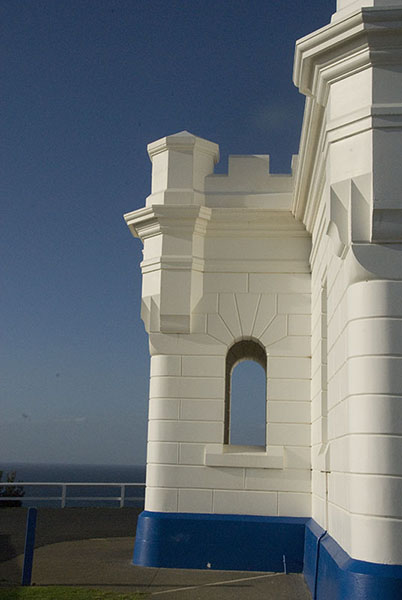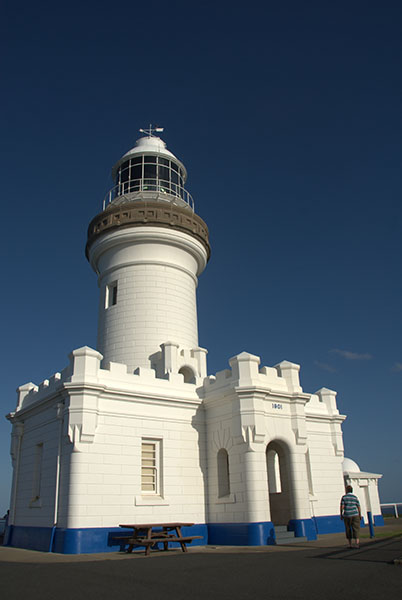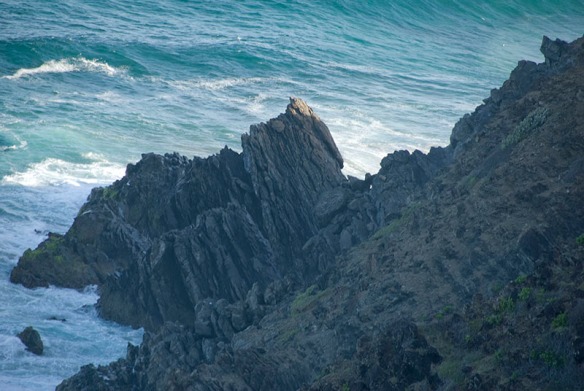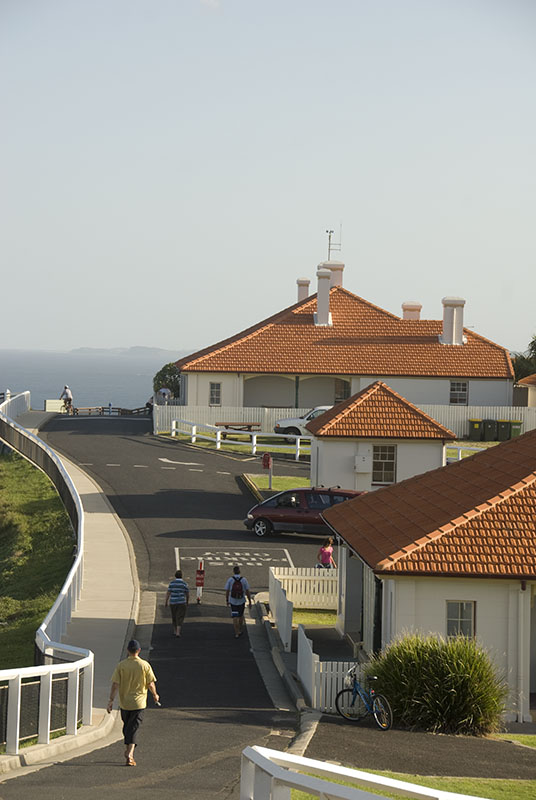“You take so many photos, you get us to stand this way and that way, but we never gets to see them,” yelled my sister, all the way from Brisbane, the other day. The line crackled, and I mumbled about lost computers and hard disks crashing, which sounded lame even to my own ears. Most of the time, we ignore her yelling bouts – but this one rang true, especially, as I had photographed her friends and was clicking madly on a memorable trip to Byron Bay.
So the question was where was those images. It was time to dig deep into the archives and voila! when I had almost given up hope, the files surface. Ahhh,amazing how photos reactivate your brain cells . … they are a tad wonky but it’s not easy to photograph these giants without a tripod.
Completed in 1901, out of precast concrete blocks and painted white, the lighthouse against the blue sky was indeed a striking sight.

I walked around the base, looking for good angles to photograph. When building this the concrete blocks for the tower were made on the ground, lifted and cemented into position. Photo copyright Chulie de Silva.
The most famous lighthouse structure from antiquity was the Pharos of Alexandria, although it collapsed during an earthquake centuries later.The roots of lighthouses lie in fires that were built in the very early days along hill tops to guide seafaring men safely ashore. Then it became a practice to put the fires on a platform to improve the visibility and that led to the development of the lighthouse.
A quick search revealed interesting factoids on the Cape Byron Lighthouse.
The tower is tapered, standing 74 feet (23 m) high, including the lantern. Ascending is done via an internal spiral concrete staircase. On top is the the iron floored lantern room which is domed, covered in sheet metal, and surmounted by a wind vane and a ventilator.
It is Australia’s most powerful lighthouse, with a light intensity of 2,200,000 cd. However, it started life with a concentric six wick kerosene burner with an intensity of 145,000 cd.[This was replaced in 1922 by a vapourised kerosene mantle burner with an intensity of 500,000 cd. In 1922 an improved apparatus was installed, doubling the power to 1,000,000 cd. In 1956 the light was electrified, the clock mechanism was replaced by an electric motor, and the light source was replaced with a 1000 Watt120 Volt tungsten-halogen lamp with an intensity of 2,200,000 cd, fed from the Mains electricity, with a 2.5 KVA backup diesel alternator. At that time, the keeper staff was reduced from three to two. The station was fully automated in 1989, and The last lighthouse keeper left in 1989 when the station was fully automated.
Our friend Elaine, was giving us the history and pointed out that I was standing at the easternmost point of the mainland of Australia, located about 3 kilometres (1.9 mi) northeast of the town of Byron Bay.
The view below into the sea is fascinating too, showing the jagged coastline. We did see some dolphins frolicking below, but couldn’t catch them in a photo.

Am always fascinated by the sea crashing on to the shores and can sit watching it for hours. Photo copyright Chulie de Silva.
The site is beautifully maintained and contains the head lighthouse keeper’s residence, and two assistant keeper’s cottages that were also erected from precast concrete blocks in 1901. These can be rented out now by holiday makers. See http://www.byronbaylighthouse.com/lighthouse-cottages.html
The total cost of building Wikipedia says was £10,042 pounds to the contractors, £8,000 for the apparatus and lantern house, and £2,600 for the road from Byron Bay township. Adjusting for inflation, this equates to roughly $2.8M Australian dollars today.
Light was fading, heat cooling as we left, in search of fish and chips. The beach had been crowded but a few lingered. Gulls swirled and the adventurous ones were still having fun.
The light is operated by the Australian Maritime Safety Authority, while the site is managed by Department of Environment, Climate Change and Water as part of the Cape Byron State Conservation Area, and by the Byron Bay Headland Reserve Trust.









Pingback: Capering at Cape Byron Lighthouse | සතුටු වැස්ස බ්ලොග් කියවනය
Great blog. Brought back memories of my visit to the Dondra Lighthouse aeons ago.